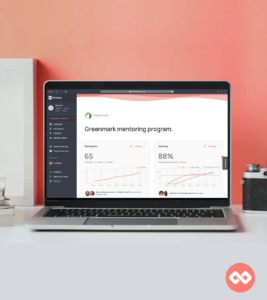Employee Resource Groups (ERGs) have emerged as a vital element in fostering workplace diversity, equity, and inclusion. As organizations recognize the positive impact of diverse and inclusive workplaces on employee engagement, creativity, and overall business success, ERGs have gained substantial traction in recent years. But what exactly are ERGs, and what roles do they play in empowering employees and driving meaningful change? In this article, we explore the different aspects of ERGs, their purposes, best practices, and the future of these transformative groups.
What is an Employee Resource Group (ERG)?
An Employee Resource Group (ERG) is a voluntary, employee-led group whose primary goal is to foster a diverse and inclusive workplace. ERGs serve as a bridge between different employee groups and the organization’s leadership, promoting better understanding, collaboration, and communication across cultural, gender, and other demographic divides.
ERGs typically focus on specific demographic groups or diversity themes, such as race, gender, sexual orientation, veteran status, or ability. However, their scope is not limited to these factors – they can also encompass various professional, personal, and developmental topics relevant to employee success and well-being.
ERGs can be a powerful tool for organizations to create a more inclusive and welcoming workplace culture. By providing a platform for employees to connect and collaborate with colleagues who share similar experiences and perspectives, ERGs can help to break down barriers and promote a sense of belonging and community within the workplace.
For example, an ERG focused on supporting employees with disabilities might organize events and activities designed to raise awareness about accessibility issues in the workplace, as well as provide resources and support for employees with disabilities. Similarly, an ERG focused on LGBTQ+ issues might organize events and activities to celebrate Pride Month, provide resources and support for LGBTQ+ employees, and advocate for LGBTQ+ rights both within and outside of the organization. And an ERG for parents in the workplace will focus on supporting those coming back from parental leave and provide parents in the organization with resources for different stages of parenthood.
ERGs can also play an important role in helping organizations to attract and retain diverse talent. By demonstrating a commitment to diversity and inclusion through the establishment of ERGs, organizations can signal to potential employees that they value diversity and are committed to creating a welcoming and inclusive workplace culture.
Overall, ERGs are an important tool for organizations looking to create a more diverse, inclusive, and supportive workplace culture. By providing a platform for employees to connect, collaborate, and advocate for their shared interests and experiences, ERGs can help to break down barriers and promote a sense of belonging and community within the workplace.

The Purpose of an ERG
ERGs or Employee Resource Groups are an essential component of any organization that values diversity, equity, and inclusion. They provide a platform for employees to come together and discuss issues that are important to them, share their experiences, and support each other. ERGs can be formed around various identities such as race, ethnicity, gender, sexual orientation, age, disability, and more.
One of the primary functions of ERGs is to promote awareness and understanding of different cultures, backgrounds, and experiences. Through events, workshops, and other initiatives, ERGs can educate employees on the unique challenges faced by different groups and create a more inclusive workplace.
ERGs can also play a crucial role in fostering professional growth and development. By creating networking opportunities and mentorship programs, ERGs can help employees build relationships, gain new skills, and advance their careers. This can be particularly beneficial for employees from underrepresented groups who may face additional barriers to advancement.
In addition to supporting individual employees, ERGs can also assist with recruitment and retention efforts. By ensuring a diverse workforce, organizations can better understand and serve their customers and communities. ERGs can also help create a more welcoming and inclusive workplace, which can lead to higher employee engagement and retention.ERGs can also be powerful advocates for inclusive policies and practices within the organization. By working with leadership and HR, ERGs can help identify areas where the organization may be falling short and recommend solutions. This can include everything from improving diversity in hiring and promotion to ensuring that company policies are inclusive and equitable.
Finally, ERGs can facilitate community involvement and volunteering initiatives. By partnering with local organizations and charities, ERGs can help employees give back to their communities and make a positive impact beyond the workplace.
In conclusion, ERGs are a critical component of any organization that values diversity, equity, and inclusion. By providing support, advocacy, and community, ERGs can enhance employee engagement, foster innovation, and collaboration, and create a sense of belonging among employees.
Common Types of ERGs
Employee Resource Groups (ERGs) come in various forms, each catering to unique employee needs and interests. Here are some common types of ERGs that organizations can establish to create a more inclusive and engaging workplace:
Identity-Based ERGs
These ERGs focus on providing a safe space for individuals who share a particular identity, fostering a sense of belonging and empowerment. Examples include:
- Women in Leadership: Supporting female employees in navigating career growth and breaking barriers.
- LGBTQ+ Allies Groups: Offering a community for LGBTQ+ employees and allies to promote inclusivity.
- Cultural and Ethnic Groups: Highlighting diversity, such as African American Networks, Hispanic/Latinx ERGs, or Asian American Communities.
Purpose: Promote equity, celebrate diversity, and offer professional and personal support.
Career Development ERGs
These groups aim to help employees grow professionally through mentorship, skill-building, and networking opportunities. Examples include:
- Young Professionals Network: Helping early-career employees build connections and skills.
- Leadership Circles: Empowering aspiring leaders with tools to advance into leadership roles.
- Industry-Specific Groups: For example, Tech Innovators or Creative Collaborators, focusing on niche skill sets.
Purpose: Drive employee engagement and retention through focused career development.
Wellness and Lifestyle ERGs
Designed to enhance employees’ physical, mental, and emotional well-being, these groups foster a holistic approach to health. Examples include:
- Wellness Warriors: Encouraging fitness, healthy habits, and mental health awareness.
- Parenting and Caregiver Networks: Supporting employees balancing work and family responsibilities.
- Green Teams: Advocating for environmental sustainability in the workplace.
Purpose: Reduce burnout and promote work-life balance while aligning with employees’ values.
Social Impact and Volunteer ERGs
These groups focus on giving back to the community and aligning organizational efforts with corporate social responsibility (CSR). Examples include:
- Community Action Teams: Organizing volunteer opportunities and charity drives.
- Diversity Advocates: Promoting initiatives that support marginalized communities.
- Environmental Advocates: Leading sustainability efforts within the organization and beyond.
Purpose: Strengthen company values and engage employees in meaningful activities beyond their roles.
Interest-Based ERGs
Sometimes, employees just want to connect with colleagues who share their hobbies or passions. These ERGs focus on creating informal networks and fostering camaraderie. Examples include:
- Book Clubs: Bringing together employees who love to read and discuss literature.
- Gaming Guilds: Connecting gamers for socializing and friendly competitions.
- Foodie Networks: Exploring culinary interests and hosting events like potlucks or cooking classes.
Purpose: Build informal connections and enhance workplace relationships through shared interests.
Why Offer a Variety of ERGs?
Providing a range of ERGs ensures inclusivity and allows employees to engage in ways that resonate most with them. This variety creates a sense of belonging, increases employee satisfaction, and strengthens the overall culture of the organization.
Pro Tip: Encourage employees to propose and lead ERGs that align with their passions. Leadership support and clear guidelines for starting and sustaining ERGs can make these groups thrive.
How to Set Up an ERG
Establishing an Employee Resource Group (ERG) is a great way to promote diversity, equity, and inclusion in the workplace. ERGs provide a platform for employees to connect, share experiences, and work together to address issues related to diversity and inclusion. However, setting up an ERG requires careful planning and commitment from both employees and the organization’s leadership. The following steps can help guide you in setting up a successful ERG:
- Assess the need: Identify the specific diversity, equity, or inclusion issues your organization faces and how an ERG can address them.
- Gain leadership support: Engage senior leaders and secure their commitment to the ERG’s mission, vision, and objectives.
- Assemble a team: Identify interested employees who are passionate about the ERG’s focus and have relevant skills or experiences to contribute.
- Define goals and objectives: Establish clear, measurable objectives for the ERG, aligned with the organization’s diversity, equity, and inclusion goals.
- Develop a plan of action: Outline the ERG’s structure, governance, and membership rules, as well as a roadmap of planned activities or initiatives.
- Acquire resources: Advocate for the necessary resources, including funding, time, and space, to support the ERG’s efforts.
- Implement and iterate: Launch the ERG and regularly evaluate its effectiveness to adjust strategies as needed.
Understanding ERG Leadership and Governance
A well-defined leadership structure and governance model is crucial for an ERG’s success. Effective ERG leadership involves:
- Having a committed executive sponsor who can advocate for the ERG at the leadership level.
- Developing a core team of passionate and skilled individuals to drive the ERG’s efforts.
- Establishing a clear governance structure, outlining roles, responsibilities, and decision-making processes.
- Encouraging open communication and collaboration between ERG members and the organization’s leadership.
- Providing mentorship, guidance, and support to help ERG members grow and develop their leadership skills.
By ensuring that ERG leadership is inclusive, collaborative, and aligned with the broader organizational goals, ERGs can effectively champion diversity, equity, and inclusion initiatives and create a lasting impact.
Learn about how you can support your organization’s Employee Resource Groups
Tips for ERG Success
To ensure the success of an ERG, it’s crucial to follow some best practices:
- Align with organizational goals: Ensure that the ERG’s objectives are in sync with the organization’s overall diversity, equity, and inclusion strategy and goals.
- Engage employees at all levels: Involve employees from diverse backgrounds and hierarchical levels to create an inclusive and representative ERG.
- Create a culture of inclusion: Encourage participation from all employees and promote discussions around various aspects of diversity, equity, and inclusion.
- Measure and report progress: Regularly track, assess, and communicate the ERG’s progress and impact to maintain engagement and commitment.
- Collaborate with other ERGs: Foster inter-ERG collaboration to share best practices, resources, and insights, and to drive cross-functional impact.
Examples of Effective ERGs
Many organizations have successfully implemented ERGs and reaped their benefits. Here are some inspiring examples:
- IBM’s Business Resource Groups: IBM has a long history of championing diversity and inclusion, with several well-established Employee Resource Groups supporting diverse employee segments, such as LGBTQ+ individuals, women, veterans, or people with disabilities.
- General Electric’s African American Forum: GE’s African American Forum promotes networking, professional development, and community outreach among Black employees, fosters diversity and inclusion, and recruits underrepresented talent.
- Bank of America’s LGBTQ+ Pride ERG: As a part of Bank of America’s efforts to support diversity and inclusion, their Pride ERG focuses on the professional development and well-being of LGBTQ+ employees and fosters a workplace culture that values inclusivity.
These examples highlight the potential of ERGs to drive lasting change and empower employees to create more diverse, equitable, and inclusive workplaces.
Challenges of Establishing an ERG
While creating an ERG has numerous benefits, there can be challenges along the way, such as:
- Lack of leadership support or resources.
- Resistance to change or new initiatives within the organization.
- Difficulty in engaging employees and maintaining enthusiasm among ERG members.
- The risk of tokenism or superficial diversity efforts.
By acknowledging and addressing these challenges, organizations can build effective ERGs that foster genuine diversity, equity, and inclusion initiatives.
Measuring the Impact of an ERG
Evaluating the impact of an ERG is essential for its long-term success and sustainability. Some key performance indicators that can be used to measure ERG effectiveness include:
- Employee engagement and satisfaction survey results.
- Turnover rates and talent retention, particularly among underrepresented groups.
- Participation rates in ERG events, initiatives, mentorship programs, and workshops.
- Demonstrated progress towards diversity, equity, and inclusion goals.
- Impact on company culture, policies, or practices.
Transparently sharing progress and measuring the impact of ERGs helps ensure their continued support from both employees and the organization’s leadership.
If you’re using Mentorloop Pro or Mentorloop Enterprise, you can explore the demographics of your cohort, download beautifully presented PDF reports, and understand the sentiment of your program, all from your dashboard.
Best Practices for ERGs
For an ERG to succeed, it’s crucial to adhere to best practices that promote sustainability, effectiveness, and inclusivity. These include:
- Engaging senior leadership and securing their ongoing support.
- Attracting diverse members and maintaining an inclusive environment.
- Clarifying roles and responsibilities within the ERG and establishing a governance structure.
- Aligning the ERG’s objectives with the organization’s broader diversity, equity, and inclusion goals.
- Regularly monitoring, evaluating, and iterating on ERG efforts.
By implementing these best practices, organizations can create thriving ERGs that contribute to a positive and inclusive workplace culture.
Learn more about Best Practices for Employee Resource Groups: Success Strategies
How to Amplify ERGs’ Impact With Successful Mentoring Programs
Mentoring programs can significantly enhance the impact of ERGs by offering opportunities for career growth, networking, and personal development. Here are some ways in which ERGs can leverage mentoring programs to amplify their impact.
Strengthening Professional Development
Mentoring programs within ERGs provide members with direct access to guidance and expertise, helping them navigate career challenges and achieve personal growth. For example:
- Career Advancement: Mentors can help ERG members identify growth opportunities, develop leadership skills, and create actionable career plans.
- Skill Building: Tailored mentoring sessions can focus on enhancing skills like public speaking, negotiation, or technical expertise.
- Opportunities for reverse mentorship: Individuals from underrepresented groups can share their unique insights and perspectives with senior leaders
Impact: Members gain valuable tools to excel in their careers, making the ERG a trusted source for professional development.
Building Inclusive Leadership Pipelines
ERGs often focus on underrepresented groups, making mentoring an effective way to prepare members for leadership roles.
- Representation Matters: Mentoring fosters the development of diverse talent, ensuring equitable representation in leadership positions.
- Cross-Generational Learning: Pairing senior leaders with emerging talent within ERGs creates opportunities for mutual learning and understanding.
Impact: Organizations see a more diverse and inclusive leadership pipeline, aligned with their DEI goals.
Enhancing Peer Support and Connection
Mentoring within ERGs can move beyond traditional one-on-one models to include group or peer mentoring, fostering collaboration and stronger networks.
- Group Mentoring: Creates a sense of community by allowing participants to share experiences and learn from multiple mentors.
- Peer-to-Peer Mentoring: Encourages members to support and uplift each other, building trust and camaraderie within the ERG.
Impact: Members feel more connected and supported, reducing isolation and boosting engagement, especially among Identity-Based and Wellness and Lifestyle ERGs (e.g. new parents in the workplace, minorities, neurodivergent team members).
Driving ERG Engagement and Longevity
Incorporating mentoring programs can rejuvenate ERG participation and attract new members.
- Increased Value: Members see tangible benefits, like career growth and skill development, making ERGs more appealing.
- Sustained Activity: Mentoring programs provide ongoing structure and focus, ensuring the ERG remains active and impactful over time.
Impact: Higher engagement leads to a more vibrant, resilient ERG that continues to deliver value year after year.
Aligning Organizational Goals with ERG Missions
Mentoring programs can bridge the gap between ERG objectives and broader organizational goals.
- Employee Retention: Employees involved in mentoring programs often feel more loyal and connected to their organizations.
- Cultural Integration: Mentoring helps ERGs align their activities with company values, fostering a cohesive and inclusive culture.
Impact: Organizations benefit from the enhanced loyalty and productivity of employees engaged in both ERGs and mentoring initiatives.
Learn how USA-based media company Ziff Davis supported their ERGs through their mentoring program while also using ERG members’ insights to improve the mentoring program as it grew.
Pro Tip: How to Get Started
- Leverage Mentoring Software: Use platforms like Mentorloop to streamline the setup and management of mentoring programs within ERGs.
- Define Clear Objectives: Align mentoring goals with the ERG’s mission and members’ needs.
- Promote Participation: Highlight success stories and the benefits of mentoring to encourage member involvement.
The Future of Employee Resource Groups
As organizations continue to recognize the importance of diversity, equity, and inclusion in the workplace, the role of ERGs will likely evolve and expand in the coming years. Some potential directions for the future of ERGs include:
- Adopting a more holistic approach that addresses intersectionality, acknowledging the complexity of employee identities and experiences.
- Focusing on allyship and active involvement of employees who do not belong to a specific underrepresented group but support the goals of the ERG.
- Collaborating with external organizations, leveraging partnerships to amplify ERG impact on the broader community.
- Leveraging technology to connect and engage employees across geographical boundaries more effectively.
The future of ERGs will be shaped by their ability to adapt, innovate, and remain relevant in a rapidly changing workplace landscape.
Final Thoughts
Generational change takes a great deal of effort and requires us all to play a role. Employee Resource Groups and mentoring programs are a natural partnership that can significantly enhance their collective impact. By implementing successful mentoring programs, ERGs can help to accelerate this change, facilitate career growth, foster a more inclusive culture, and drive organizational transformation, making a lasting impact on the lives of employees and the organization as a whole.




